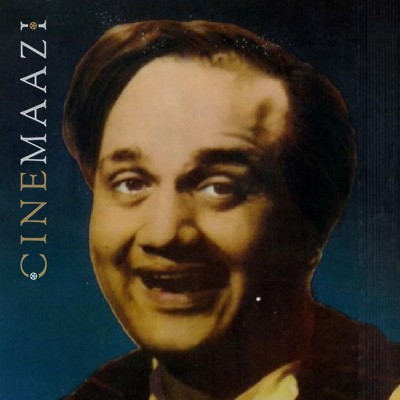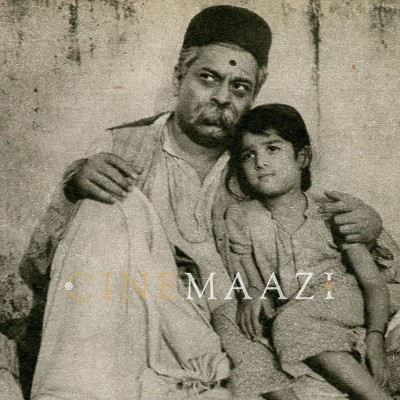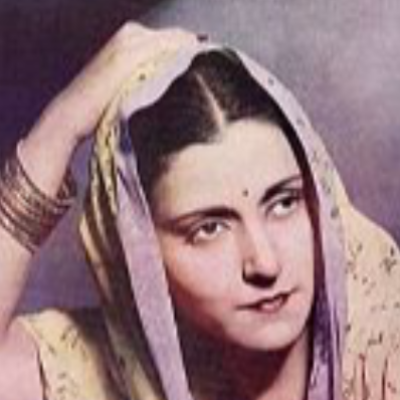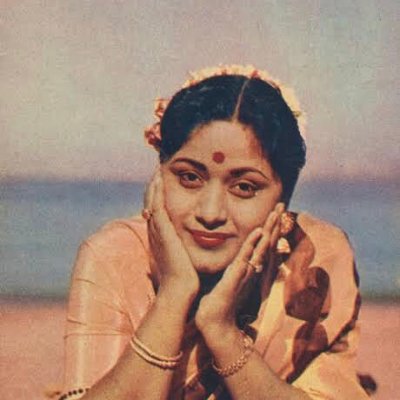B Nagi Reddy

Subscribe to read full article
This section is for paid subscribers only. Our subscription is only $37/- for one full year.
You get unlimited access to all paid section and features on the website with this subscription.
Not ready for a full subscription?
You can access this article for $2 , and have it saved to your account for one year.
- Real Name: Bommireddy Nagi Reddy
- Born: 2 December, 1912 (Pottimpadu, Cuddapah, Andhra Pradesh)
- Died: 25 February, 2004 (Chennai, Tamil Nadu)
- Primary Cinema: Hindi
- Spouse: Seshamma Bommireddy
- Children: Lakshmi Narasimha Prasad Reddy Bommireddy, Venugopal Reddy Bommireddy, Venkatarama Reddy Bommireddy
Prominent, multiple award-winning film producer, director and presenter, B Nagi Reddy was mainly active in Telugu, as well as Hindi cinema. He produced over 50 films in genres that include mythological, devotional and historical, in different languages over four decades. These include Patala Bhairavi (1951), Missamma (1955), Maya Bazaar (1957), Gundamma Katha (1962), Maduve Madinodu (1965, Kannada), Enga Veetu Pillai (1965), Ram Aur Shyam (1967), Nam Naadu (1969), Shriman Shrimati (1982), Julie (1975), and Swarg Narak (1978). Founder of the Vijaya Vauhini Studios in Chennai, which was Asia's biggest film studio at the time, he made most of his films in collaboration with screenwriter Alur Chakrapani. After the latter’s demise, he stopped producing films. Among the many honours he received are the prestigious Dada Saheb Phalke Award by the Government of India for his lifetime contribution to Indian cinema in 1986, and the Raghupathy Venkaiah Award by the State Government of Andhra Pradesh for his outstanding contribution to Telugu cinema. Winner of two Filmfare Awards in the Best Film category for Maya Bazaar (1957) and Gundamma Katha (1962), he was also awarded a doctorate by Srikrishnadevaraya University and Sri Venkateswara University. He also served two terms as president of Film Federation of India. In the realm of publishing, he started the Andhra Jyothi newspaper in 1945, and also established the popular children’s magazine Chandamama in July 1947, which went on to be printed in nearly 12 languages.
Born on 2 December, 1912 in Pottimpadu, Cuddapah district, Andhra Pradesh, his career in films would run parallel to the growth of Tamil and Telugu cinema. Starting off working in his family business for a brief period, he went on to found the children’s monthly magazine, Chandamama in 1947. He was partnered in this venture by his close friend, Chakrapani. The magazine went on to achieve enormous popularity.
In the short span of two years, he took over Vauhini Studios in Chennai in 1949. He established his own banner Vijaya Productions. His very first film, Shaukaru (1950) birthed a new glorious era in Telugu and Tamil cinema. Though the film was not a box office success, it won appreciation. The film’s heroine, Janaki, who made her debut in the film, became widely popular and came to be known as Shaukaru Janaki after this release. His next production, the bilingual Patala Bhairavi which released in 1951, won acclaim from both Telugu and Tamil audiences. Directed by K V Reddy, the film revolved around a gardener’s son who has to amass wealth equal to that of the king of Ujjain to marry his daughter, and a sorcerer who has to sacrifice an intelligent and brave young man to Goddess Patala Bhairavi in order to gain access to a wish-fulfilling statuette.
It was the beginning of an incredible success story for Reddy. His 1955 bilingual production Missimma in Telugu, and Missamma in Tamil focused on social issues such as unemployment, corruption, and freedom of worship. A rom-com, it involved Rao and Mary, two unemployed new graduates, who decide to act as a married couple so that they qualify for two teaching jobs at a High School, and eventually fall in love. The film established N T Rama Rao, Savitri and Akkineni Nageshwara Rao as real stars in Telugu cinema, while the Tamil version starring Savitri and Gemini Ganesan became a rage in Tamil Nadu.
His production Maya Bazaar (1957), made in Tamil and Telugu, was a mythological featuring N T Rama Rao as Lord Krishna, S V Ranga Rao as Ghatotkajudu, Savitri as Sasirekha, Gemini Ganesan as Abhimanyu, and Akkineni Nageshwara Rao. It focused on the story from the epic wherein Balaram promises Subhadra to get his daughter married to her son. However, when the Pandavas loses their kingdom to the Kauravas, he breaks his promise.
Establishing himself as a hit producer, he also directed the Tamil language comedy-drama Manithan Maravillai (1962) with Aluri Chakrapani. It revolved around the story of a proud mother, Subbamma, and the way she handles her two sons-in-law. The film starred Gemini Ganesan, Savitri, Akkineni Nageswara Rao, Jamuna and Sundari Bai in lead roles. It was not a commercial success.
His production Enga Veetu Pillai (1965) featured M G Ramachandran as the hero. It revolved around a pair of identical but contrasting twins who were separated at birth, and focuses on what happens when they cross paths. It emerged a major box office success, running for over 25 weeks in theatres in Chennai, Trichy, Coimbatore, Madurai, and Thanjavur, and became a silver jubilee hit.
In the realm of Hindi cinema, he produced Ram Aur Shyam (1967). Directed by Tapi Chanakya, it starred Dilip Kumar in a double role as twins separated at birth, alongside Waheeda Rehman, Mumtaz, Nirupa Roy and Pran. It went on to inspire multiple films revolving around twins separated at birth such as Seeta Aur Geeta (1972), ChaalBaaz (1989) and Kishen Kanhaiya (1990). The second highest-grossing Indian film of 1967 domestically in India and overseas, it was widely appreciated.
His Ghar Ghar Ki Kahani (1970), directed by T Prakash Rao, starred Balraj Sahni, Nirupa Roy and Bharathi. It told the tale of an honest government employee, who nets a humble salary and is unable to meet the demands of his three school-going children. Things get complicated when the trio declares a hunger fast until their demands are met, following which he lets them handle the household expenses for a period of six months.
Julie (1975), his romantic drama production directed by K S Sethumadhavan and written by Chakrapani, starred Lakshmi in the title role, along with Vikram, Nadira, Rita Bhaduri, Om Prakash, Utpal Dutt and Sridevi (in her first significant Hindi film role). The film was a critical and commercial success, depicting the restrictive social conventions regarding inter-religion marriage and unwed motherhood in India. It was also a musical blockbuster, with award-winning music by Rajesh Roshan which won him the Filmfare Award for the year. It had one of the first English language songs in an Indian film - My heart is beating, rendered by Preeti Sagar.
His other Hindi productions include Yehi Hai Zindagi (1977) starring Sanjeev Kumar and Utpal Dutt; the comedy-romance Swarg Narak (1978) featuring Sanjeev Kumar, Jeetendra and Vinod Mehra; Swayamvar (1980) starring Shashi Kapoor, Sanjeev Kumar and Moushumi Chatterjee; and Shriman Shrimati (1982) featuring Sanjeev Kumar, Raakhee, and Rakesh Roshan.
He headed the South Indian Film Chamber of Commerce for four times and All-India Film Sammelan for two terms. He also established Vijaya Colour Labs, and Vijaya Medical & Educational Trust. He served as the Chairman, Board of Trustees of Tirumala Tirupati Devasthanams between 1980 and 1983 and is credited for building the Vaikuntam Queue Complex that serves to regulate pilgrims for darshan in the Tirumala Venkateswara Temple.
B Nagi Reddy passed away on 25 February, 2004 in Chennai.










.jpg)



